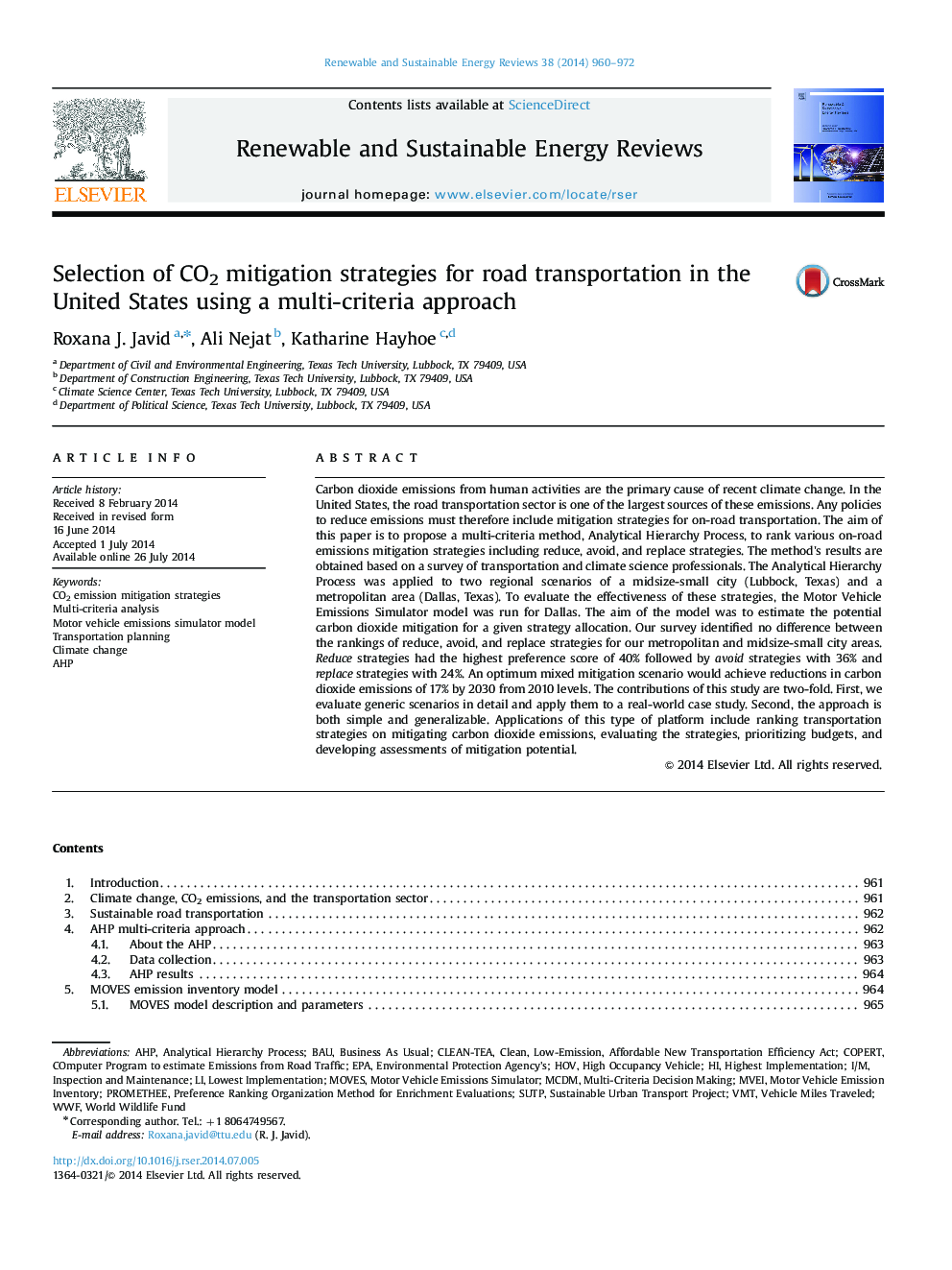| Article ID | Journal | Published Year | Pages | File Type |
|---|---|---|---|---|
| 8119878 | Renewable and Sustainable Energy Reviews | 2014 | 13 Pages |
Abstract
Carbon dioxide emissions from human activities are the primary cause of recent climate change. In the United States, the road transportation sector is one of the largest sources of these emissions. Any policies to reduce emissions must therefore include mitigation strategies for on-road transportation. The aim of this paper is to propose a multi-criteria method, Analytical Hierarchy Process, to rank various on-road emissions mitigation strategies including reduce, avoid, and replace strategies. The method׳s results are obtained based on a survey of transportation and climate science professionals. The Analytical Hierarchy Process was applied to two regional scenarios of a midsize-small city (Lubbock, Texas) and a metropolitan area (Dallas, Texas). To evaluate the effectiveness of these strategies, the Motor Vehicle Emissions Simulator model was run for Dallas. The aim of the model was to estimate the potential carbon dioxide mitigation for a given strategy allocation. Our survey identified no difference between the rankings of reduce, avoid, and replace strategies for our metropolitan and midsize-small city areas. Reduce strategies had the highest preference score of 40% followed by avoid strategies with 36% and replace strategies with 24%. An optimum mixed mitigation scenario would achieve reductions in carbon dioxide emissions of 17% by 2030 from 2010 levels. The contributions of this study are two-fold. First, we evaluate generic scenarios in detail and apply them to a real-world case study. Second, the approach is both simple and generalizable. Applications of this type of platform include ranking transportation strategies on mitigating carbon dioxide emissions, evaluating the strategies, prioritizing budgets, and developing assessments of mitigation potential.
Keywords
EPAWorld Wildlife FundHOVMCDMPROMETHEEVMTCOPERTWWFBaUInspection and maintenancetransportation planningMulti-criteria analysisMulti-criteria decision makingClimate changeMOVESPreference ranking organization method for enrichment evaluationsAnalytical hierarchy processAHPVehicle miles traveledI/MBusiness as Usual
Related Topics
Physical Sciences and Engineering
Energy
Renewable Energy, Sustainability and the Environment
Authors
Roxana J. Javid, Ali Nejat, Katharine Hayhoe,
